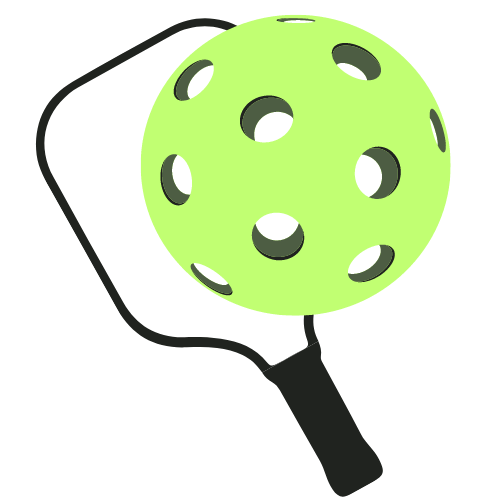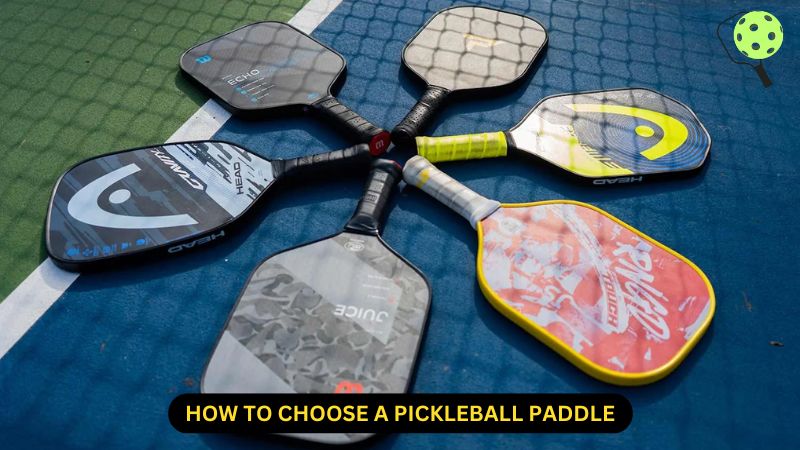Blog
How to Choose a Pickleball Paddle: A Comprehensive Guide
Pickleball is one of the fastest-growing sports in the world, and choosing the right paddle is crucial for enhancing your performance and enjoyment of the game. Whether you’re a beginner or an advanced player, the pickleball paddle you choose can significantly impact your gameplay, control, and comfort.
This guide will walk you through everything you need to know about how to choose a pickleball paddle for your needs, including key features, materials, sizes, and tips to make an informed decision.
Why Choosing the Right Pickleball Paddle Matters
The pickleball paddle is your primary tool on the court. A well-suited paddle ensures:
- Control: Better handling and precision for shots.
- Power: Improved ability to generate force.
- Comfort: Reduced strain on your hand and wrist.
- Durability: Long-lasting performance.
How to Choose a Pickleball Paddle
Skill Level
Your experience level should influence your paddle choice:
- Beginners: Look for paddles that are lightweight and offer a larger sweet spot to make hitting the ball easier.
- Intermediate: A balance of power and control helps refine technique.
- Advanced: Opt for paddles designed for specific play styles, such as power or finesse.
Weight
The weight of the paddle affects how it feels in your hand and impacts your performance.
Light Paddles (6.8–7.2 ounces)
- Pros: Easier to maneuver, quicker reactions.
- Cons: Less power; may require more effort to hit hard shots.
- Best for: Beginners or players who prioritize control and precision.
Midweight Paddles (7.3–8.4 ounces)
- Pros: Balanced power and control.
- Cons: May cause strain if used for long periods.
- Best for: Intermediate players seeking versatility.
Heavy Paddles (8.5+ ounces)
- Pros: Generate more power with less effort.
- Cons: Reduced maneuverability; can cause arm fatigue.
- Best for: Advanced players who prioritize power.
Material
Pickleball paddles are made from various materials, each with its advantages:
Wood
- Pros: Durable, affordable.
- Cons: Heavy, less responsive.
- Best for: Beginners or recreational players on a budget.
Composite
- Pros: Lightweight, excellent control, versatile.
- Cons: More expensive than wood.
- Best for: Intermediate players.
Graphite
- Pros: Ultra-lightweight, responsive, high precision.
- Cons: Expensive.
- Best for: Advanced players or those focused on finesse.
Grip Size
The grip size of your paddle is crucial for comfort and control.
How to Measure
- Hold the paddle like a handshake.
- Insert your index finger between your palm and fingers gripping the paddle.
- If the space fits snugly, the grip size is correct.
Grip Size Options
- Small (4 inches): Better for smaller hands and control-oriented players.
- Medium (4.25 inches): A versatile option that fits most players.
- Large (4.5 inches): Ideal for players with larger hands or those seeking more stability.
Paddle Shape
Pickleball paddles come in different shapes, each designed for specific play styles:
- Standard: Balanced width and length; great for beginners.
- Wide-Body: Larger surface area for a bigger sweet spot.
- Elongated: Extended length for better reach, but narrower sweet spot.
- Teardrop: Combines power and control with a unique shape.
Core Material
The paddle’s core impacts its performance:
Polymer Core
- Pros: Quiet, balanced performance.
- Cons: Slightly heavier.
- Best for: Recreational and tournament play.
Nomex Core
- Pros: Lightweight, powerful.
- Cons: Noisy.
- Best for: Players who prioritize power.
Aluminum Core
- Pros: Excellent control and durability.
- Cons: Reduced power.
- Best for: Control-focused players.
Surface Texture
The texture of the paddle’s surface affects how the ball reacts.
- Smooth: Ideal for players seeking consistency and power.
- Textured: Offers better spin control, suitable for advanced players.
Choosing a Paddle Based on Your Play Style
Power Players
- Opt for a heavier paddle with a composite or graphite surface.
- Look for a smaller grip size for better leverage.
Control Players
- Choose a midweight or lightweight paddle with a polymer or aluminum core.
- A textured surface helps enhance spin and shot placement.
All-Around Players
- A midweight paddle with a versatile core and standard shape is ideal.
- Look for a balanced combination of power and control.
Tips for Testing a Pickleball Paddle
- Swing Test: Check the paddle’s weight and grip by mimicking gameplay swings.
- Sweet Spot: Hit a few practice shots to identify the paddle’s sweet spot and responsiveness.
- Comfort: Ensure the grip feels comfortable and secure during use.
Popular Pickleball Paddle Brands
Selkirk Sport
- Known for premium paddles with innovative designs and materials.
- Best for intermediate to advanced players.
Paddletek
- Offers paddles with balanced performance and durability.
- Suitable for all skill levels.
Onix
- Focused on power and control with a wide range of paddle options.
- Popular among tournament players.
Gamma
- Lightweight paddles with ergonomic grips.
- Ideal for beginners and casual players.
Frequently Asked Questions
Q1: What is the best paddle for beginners?
For beginners, a lightweight paddle with a larger sweet spot, such as a polymer-core paddle, is ideal.
Q2: Can I use one paddle for singles and doubles?
Yes, most paddles are versatile enough for both singles and doubles play.
Q3: How long does a pickleball paddle last?
The lifespan of a paddle depends on usage and materials. On average, it lasts 1–3 years with regular play.
Conclusion
Choosing the right pickleball paddle is an essential step in improving your game and maximizing your enjoyment on the court. By considering factors like weight, material, grip size, and your play style, you can find a paddle that complements your skills and preferences.
Take the time to test different paddles, explore reputable brands, and invest in a paddle that feels right for you. Whether you’re a casual player or aiming for competitive success, the perfect pickleball paddle will enhance your performance and make every game more enjoyable.
So, grab your paddle, hit the court, and elevate your pickleball experience!

